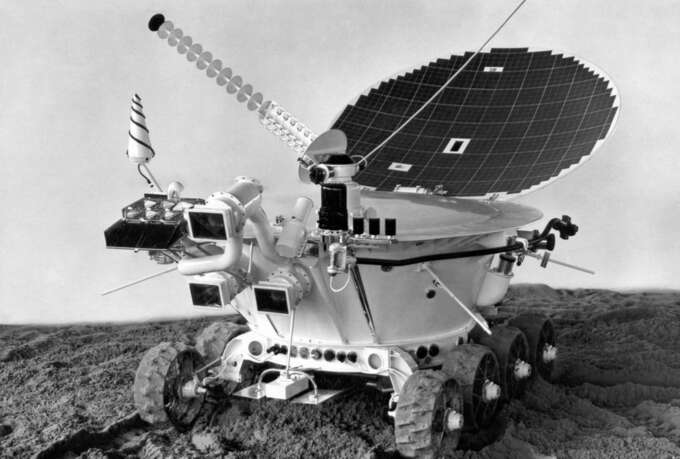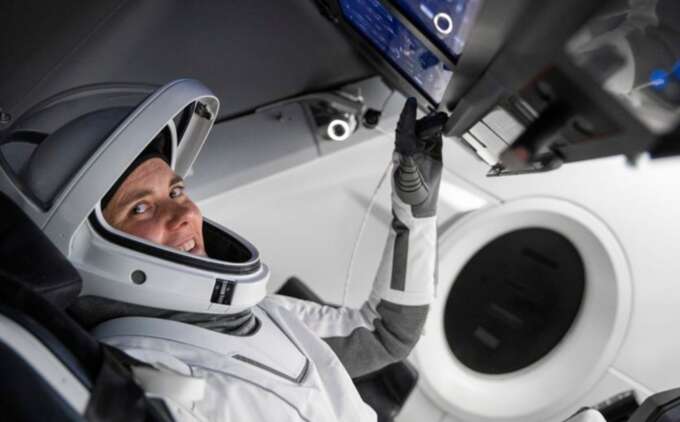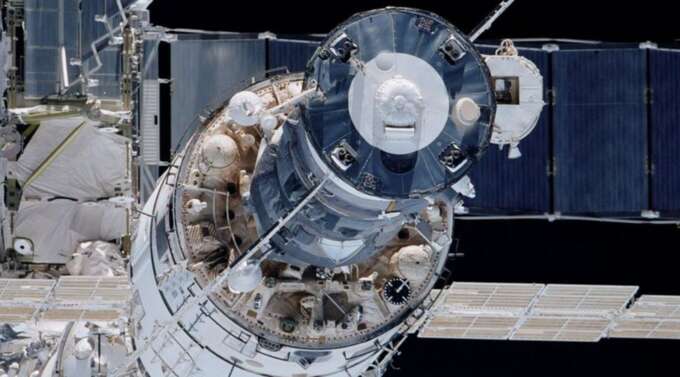The end of an era: The US prepares to sever space ties with Russia, threatening Roscosmos’s future

NASA’s ongoing flight tests of the Boeing Starliner manned spacecraft mark another milestone in its journey towards independence from Russian Soyuz services.
Not long ago, the U.S. and Russia were inextricably linked in their space exploration efforts. However, following Russia’s 2014 annexation of Crimea, NASA embarked on a deliberate path to phase out its dependence on Roscosmos technologies. The sole remaining point of cooperation is the International Space Station (ISS), which relies on a Russian module for control. Yet even this collaboration has come into question. The U.S., despite public statements to the contrary, appears to be contemplating an end to the program. The potential loss of the US market threatens not only Roscosmos’s revenue streams, but also its capacity for future project development.
While both the Soviet and American space programs have their roots in German World War II technology, up until the 1990s they developed independently. Despite occasional collaborations like the Apollo-Soyuz and Energia-Buran projects, each nation maintained its autonomy. It wasn’t until the end of the Cold War, amidst political shifts and a crisis in post-Soviet space exploration, that significant technological exchange and cooperation began.
1991-2014: A period of mutual dependence
The collapse of the USSR plunged post-Soviet space programs into a financial crisis, forcing them to share their innovations with countries outside the former bloc just to meet basic needs and support industry personnel. Russia began selling off space artifacts, including the Lunokhod-2 moon rover, and the Topaz spacecraft’s nuclear reactor, and the spacesuit worn by cosmonaut Alexei Leonov during his historic spacewalk in 1965. These sales raised concerns in the U.S. about the potential for more lucrative Russian rocket technology to find its way to unfriendly nuclear-capable nations.

NPO Lavochkin auctioned the Lunokhod-2 in 1993 at Sotheby’s for $68,500 to American millionaire Richard Garriott
By the mid-1990s, the U.S. recognized that actively supporting Russian space efforts was preferable to entrusting its survival to market forces. Many Soviet projects and technologies revealed through the subsequent cooperation proved to be revelations for American experts.
This realization coincided with a crisis in American rocket development. The Space Shuttle program, intended as the sole means of space launch, proved cost-ineffective. It couldn’t facilitate extended manned space flights, and the U.S. had lacked its own space station since the 1970s. The burgeoning commercial space launch market relied heavily on the European Ariane IV rocket.
Russia inherited a wealth of advanced space technologies from the Soviet era, including rockets, spacecraft, space stations, long-duration manned flight expertise, and rocket engine manufacturing capabilities.
The Soviet space technologies proved highly competitive in the Western market
The demand for Soviet-era developments led to the creation of joint Russian-American and Russian-European ventures, introducing Russian space technologies to global markets, where they proved highly competitive. NASA funded the completion and upgrade of Russia’s Mir space station and commissioned the Zarya module, the first component of the future ISS, from Russian manufacturers.
By the early 2000s, Russian Proton, Soyuz, and Rokot rockets, along with Russian-Ukrainian Dnepr and Zenit vehicles, were launching American and European satellites. Russian institutes began participating in international space research projects, while foreign scientific organizations placed payloads on Russian spacecraft. American funding for the Mir and ISS programs effectively saved Russia’s manned space program, but it was Russia’s capacity to contribute to the development of Western space exploration that allowed these programs to succeed.
American funding for the Mir and ISS programs effectively saved Russia’s manned space program
Meanwhile, in the U.S, a competition was launched to develop rockets that were more economical than the Shuttle. Interestingly, one of the two winning designs, the Atlas V, utilized Russian RD-180 engines for its first stage. Later, the Antares rocket, designed to ferry cargo to the ISS, initially used Soviet NK-33 engines sourced from Russia (following a 2014 accident, Antares switched to Russian RD-181 engines).
Throughout the 2000s, the growing interdependence in space exploration activities seemed unproblematic, and cooperation expanded. In 2012 the U.S. even repealed the Jackson-Vanik amendment, a Cold War-era trade restriction that had remained in place — albeit without directly impacting space collaboration. However, early signs of future political tension emerged with the American passage of “Magnitsky Act” sanctions against Russian officials involved in abuses of human rights. The move was followed by Russia’s retaliatory “Dima Yakovlev Law,” which prevented American parents from adopting Russian orphans. The relationship deteriorated rapidly in 2014 following Russia’s annexation of Crimea and the downing of Malaysia Airlines Flight 17 over the Donbas by a Soviet-era surface-to-air missile fired from Russian BUK air defense system number 332.
2014-2022: A Cooling of Relations
In response to Russia’s annexation of Crimea, the U.S. imposed further sanctions. This time, they affected the activities of Roscosmos. The most damaging restriction for Russian space efforts was the ban on access to Western electronic components for spacecraft and rockets. This impacted multiple projects, including military and communication satellites, scientific vehicles, and GLONASS navigation system satellites. The cessation of cooperation with Ukrainian enterprises forced the discontinuation of Soyuz-FG rocket production, halted launches of the cost-effective Dnepr rockets, and froze the Sea Launch project.
The most damaging restriction for Russian space efforts was the ban on access to Western electronic components for spacecraft and rockets
While Russian space research organizations were not directly sanctioned, NASA limited or suspended discussions on potential future scientific collaboration between American and Russian entities. Still, existing partnerships largely continued on projects that included lunar studies via the LRO satellite and Martian exploration using the Mars Odyssey orbiter and Curiosity rover. To this day, Russian scientific instruments remain active on these American spacecraft, and Moscow-based scientists are still involved in their development. The ISS program was also unaffected.
It was in 2014 that the Pentagon fully grasped its space-related dependence on Russia. Without access to Russian RD-180 rocket engines, the American military spacecraft launch program would face delays. At the time, the U.S. lacked an alternative to the reliable and relatively affordable Atlas V. Although SpaceX was rapidly developing its Falcon 9, the rocket had yet to meet the requisite reliability standards for critical government launches.
In 2014, the Pentagon fully grasped its space-related dependence on Russia
The U.S. therefore opted for a compromise: imposing sanctions on Russian rocket technology with a deferred implementation date of 2023. This timeline was intended to allow for the development of domestic alternatives.
As a result, NASA funded Blue Origin’s BE-4 engine development, while the Pentagon invested in SpaceX’s Raptor engines. The BE-4 engines were slated for use in the Vulcan rocket, designed to replace Atlas V. To maintain launch capabilities, the U.S. continued to purchase Russian RD-180 engines until 2021, accumulating a reserve sufficient for around fifteen launches. Concurrently, the Pentagon increased launch orders from SpaceX, as the private company’s rockets became increasingly reliable.
The United States still maintains a reserve of Russian engines sufficient for about fifteen launches
In 2014, U.S. reliance on Russia for manned spaceflight was even more pronounced. The Space Shuttle program had ended three years prior, leaving Roscosmos spacecraft as the sole means of transporting American crews to the International Space Station. Had the U.S.-Russia relationship broken down completely at that point, it would have spelled the end of the entire ISS program, inevitably leading to the station’s de-orbiting.
Such an outcome would have dealt a severe blow to America’s space prestige, especially considering that Washington had put up 70% of the program’s total $150 billion cost and had spent a decade and a half on its construction. This setback would have been particularly visible against the backdrop of China’s rapidly advancing space program. The strategy to swiftly address this challenge with the help of private companies had not yet proven successful, and it was not until six years later that the rapidly progressing SpaceX was able to achieve manned spaceflight.

Astronauts Bob Behnken and Doug Hurley arrived at the ISS aboard the SpaceX Crew Dragon spacecraft on May 31, 2020
Then, on May 31, 2020, the Crew Dragon spacecraft carrying test astronauts Doug Hurley and Bob Behnken finally liberated NASA from its nine-year dependence on Roscosmos vehicles for manned missions. While American astronauts continued to fly on Soyuz craft, these became part of an exchange program: a “seat on Soyuz” was traded for a “seat on Crew Dragon.” Anna Kikina became the first Russian cosmonaut to fly on the new American vessel in 2022.

As part of the Crew-5 mission, Anna Kikina departed from the ISS aboard the SpaceX Dragon spacecraft
Interestingly, the U.S. dependence on Russia extended to even seemingly mundane matters on the ISS. The station housed two toilets: one in the Russian segment and another in the American segment. However, both were of Russian design, with NASA paying the Russian company RSC Energia for their installation and maintenance. It wasn’t until 2021 that a new American-designed toilet was installed in the U.S. segment, although the technology is still undergoing testing.
America’s reliance on Russia even for ISS toilets persisted until the very end
2022 to Present: The space divorce
By the time Russia launched its full-scale invasion of Ukraine, the U.S. was already actively preparing for a “space divorce.” The successful Crew Dragon flight had secured reliable access to space for astronauts from U.S. soil, and January 2024 saw another milestone with the successful launch of the Vulcan rocket, featuring new BE-4 engines of U.S. design and manufacture.
However, America’s key dependence on Russia — manned spaceflight operations on the ISS — has not yet been fully eliminated. The International Space Station essentially comprises two docked space stations: a Russian one, built from Soviet-era designs based on the Mir-2 station concept, and the U.S.-designed space station Freedom. (The American segment also incorporates Japanese and European modules, as well as the Canadian robotic arm, Canadarm-2.)
America’s critical reliance on Russia for manned ISS operations persists
Despite the segmentation, the ISS was designed with intentional interdependence between the participating nations. The Russian segment houses the Zvezda module, which contains the ISS orbit correction engines. The American segment features gyrodynes — powerful gyroscopes that can alter the station’s orientation without consuming fuel — but these do not fully eliminate the role played by the Russian engines. The American segment also supplies most of the electrical power for the Russian segment, and NASA provides Roscosmos with communication services via its geostationary satellites.
NASA’s most crucial dependence on Roscosmos lies in the Russian side’s ability to adjust the ISS’s orbit. Currently, orbit corrections can only be performed using the Russian Zvezda module or Russian Progress ships. This capability is vital for both the continuation of the ISS mission and its eventual termination, as the controlled, safe de-orbiting of the 400-ton station requires precise orbital control until atmospheric re-entry.

The Zvezda module
American Cygnus cargo ships have twice conducted experimental engine burns for orbital correction, but these remain isolated incidents. Moreover, Cygnus itself relies on Russian technology, as it launches to the ISS atop Antares and Atlas V rockets, both of which — at least for now — use Russian-made first-stage engines. In an effort to end this dependency, Northrop Grumman and Firefly are in the process of developing a new version of Antares that does not use Russian engines. Interestingly, Firefly owes much of its development to Ukrainian-born entrepreneur Max Polyakov, who invested in the project and brought in Ukrainian engineers from Dnipro.
And the U.S.-Russia relationship continues to deteriorate. In the summer of 2022, Roscosmos chief Yuri Borisov announced Russia’s plans to exit the ISS project by 2028. By then, Roscosmos aims to have constructed its new station, ROS. Other participating countries are willing to continue ISS operations until 2030 or beyond. This timeline means that, when the time for de-orbiting comes, NASA will likely no longer be able to count on Roscosmos for its assistance in decommissioning the station safely.
As a result, in 2023 NASA announced plans to allocate at least $1 billion for the creation of a Deorbit module — an additional ISS component capable of lowering the station’s orbit by 220 kilometers to facilitate a controlled end to its mission. If equipped with refueling capabilities, this module could potentially handle both lowering and raising the ISS orbit, effectively replacing the Russian Zvezda. Such a development would mark a fundamental shift in NASA’s reliance on Roscosmos.
For Roscosmos, this “American import substitution” translates to lost revenue. Each RD-180 engine sold for $10-15 million, while NASA paid $50-80 million per astronaut launch. Commercial Proton launches initially brought in $100 million each, later decreasing to $65 million, and these contracts formed a significant portion of the Russian space budget, providing orders for enterprises and salaries for tens of thousands of workers.
“American import substitution” was a source of orders for enterprises and salaries for tens of thousands of workers
To maintain its current level of space activity and employment, Roscosmos must now secure new contracts. However, neither Europe, China, nor India can provide the necessary volume of work, nor are they inclined to fund Russian space efforts so generously. Roscosmos’s primary hope, aside from increased military contracts, lies in the Russian Orbital Station. However, no Russian state program for its construction has been approved, and no additional funding has been allocated.
Meanwhile, NASA continues to emphasize its interest in maintaining cooperation with Roscosmos, suggesting that only political factors, rather than technical or practical ones, threaten the established partnerships. If political divisions between the countries deepen and the “divorce” becomes irreversible, replacing Zvezda would not only represent another triumph of American import substitution, it would also mark the end of an era in global space exploration — a time when space functioned as a realm for cooperation and knowledge exchange, transcending earthly disagreements. For now, ongoing collaboration on the ISS and reciprocal flights of Russian and American crews on each other’s spacecraft still highlight the potential for cooperation amid worsening political circumstances. They represent the hope that it may still be possible to reverse course, establish peace on Earth, and continue space exploration as part of a united global effort.
Read more similar news:
Comments:
comments powered by Disqus

































